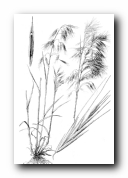
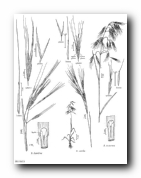
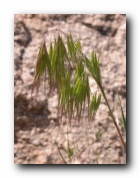
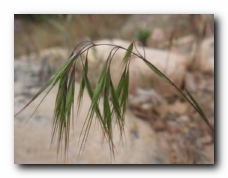

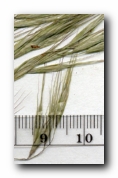
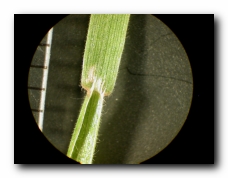
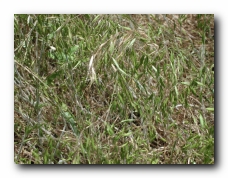
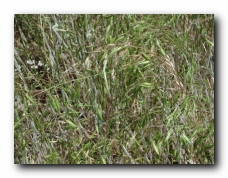
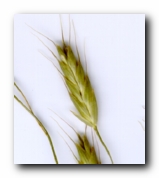
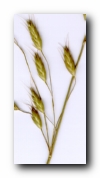


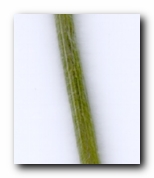
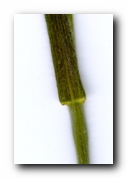
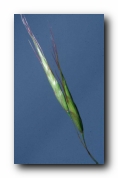
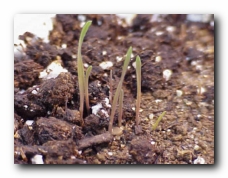
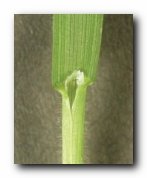
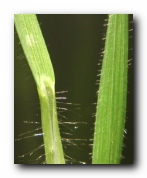
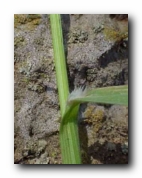
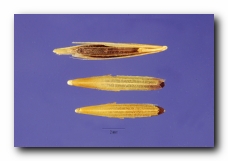
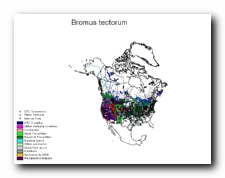
40" Rows: Broadcast:
Loam:
Clay:
Habit: Erect annual. Culms: 30-90 cm. high, smooth, or pubescent at the nodes. Blades: 10-25 cm. long, strongly nerved, flat; sparsely pubescent above, glabrous beneath. Sheaths: About as long as the internodes, strongly nerved, glabrous or the lower puberulent. Ligule: Membranous, 1-2.5 mm. long, erose. Inflorescence: Panicle exserted, 3-20 cm. long at first erect and rather narrow, finally the branches somewhat spreading and drooping, the unequal branches usually in whorls of 4-6, the shorter bearing one spikelet and the longer 3-4 spikelets at their extremities. Spikelets: Ovoid-lanceolate, becoming somewhat turgid at maturity, 1-2 cm. long, 408 mm. broad, 5-10-flowered, somewhat flattened. Glumes: Minutely scabrous towards the tip, the first 3-5 nerved, 4-6 mm. long, the second 7-nerved, 5-7 mm. long, scarious along the margins. Lemmas: 7-nerved, 6-8 mm. long, elliptic, obtuse, smooth or minutely rough, the margin scarious, strongly inrolled at maturity, apex bidentate, with wavy awns 3-5 mm. long (sometimes shorter or missing). Palea: About as long as its lemma, ciliate-hispid. Fruit: Grain furrowed, adhering to the palea. Small openings at the base of the turgid florets permit light to pass through the spikelet. Habitat: Grain fields, roadsides and other waste places. April-August. Kansas Range: East three fourths. Remarks: A variety, Bromus secalinus velutinus (Schrad.), has pubescent spikelets and occurs in Cloud and Montgomery counties. Synonyms: Bromus secalinus L. var. hirsutus Kindb. Bromus secalinus L. var. hirtus (F.W. Schultz) Hegi
Special Notes: